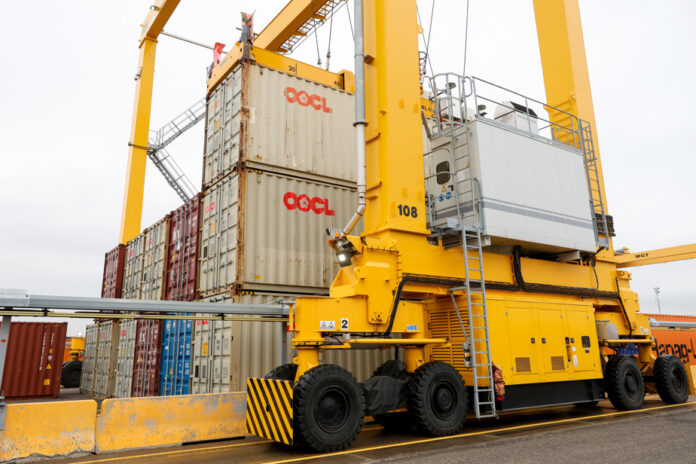To optimize the handling of maritime containers in the two terminals it operates at the Port of Montreal, Société Terminals Montréal Gateway relies on artificial intelligence (AI). The $11 million project received $4.5 million from the Government of Quebec. Installation is in progress.
In the Port of Montreal, the handling of maritime containers still involves a lot of manual tasks. “Once the container is unloaded, someone has to find it in the field and register it in the system,” explains Martin Tremblay, IT Director (Information Technology), at Société Terminals Montréal Gateway.
There is therefore a delay between the arrival of the container at the terminal and the moment when the information is accessible to customers on the website. “However, for the customer, it is very important to have this information as quickly as possible to organize their transport,” says Martin Tremblay.
The Mercure project will make it possible to follow in real time each container movement in the two terminals of Société Terminals Montréal Gateway – it carries out 3 million per year. The Internet of Things system with digital vision optimized by artificial intelligence installed on handling equipment, such as cranes and overhead cranes, will make it possible to visually identify the container and its movement. “It’s the first time we’ve done this in North America,” says the IT director.
The company has been working on this project for two years and has set up a prototype to assess the possibilities with the harsh climate of Montreal. “The results were beyond our expectations,” says Martin Tremblay. We have therefore decided to move forward with all of our activities. We have already installed the IT devices on some equipment and are preparing for a mass installation as early as June. Right now we are in the machine learning and calibration stage. »
Out of 1500 container movements made with artificial intelligence, the recognition accuracy rate is currently 98.9%. All this despite a snowstorm and an ice storm.
The Mercure project is carried out primarily to provide better customer service by tracking container movements in real time, but it will allow other gains.
With the Mercure project, the company plans to reduce its greenhouse gas emissions by 9,200 tons annually.
The grant awarded by the Ministère des Transports et de la Mobilité durable as part of the Avantage Saint-Laurent action plan enabled Société Terminaux Montréal Gateway to seek out several partners for this project. The internal teams work with several international companies on the Mercure project. “Montreal has strong expertise in artificial intelligence, but there are few ports in Canada, so there are more service providers specializing in the field in other countries,” explains Martin Tremblay.
Thus, the Finnish firm Visy, accustomed to working in a harsh climate, provided artificial intelligence and digital vision services. Austrian company Identec Solutions AG is responsible for the highly accurate GPS positioning system. Finally, the American company REMPREX is the integrator of these technologies and will also provide long-term support to Société Terminals Montréal Gateway for the solution developed.
“It’s the first time these companies have worked together, but so far it’s been going very well,” says the IT director. Our goal is to install all equipment by the end of the year and be fully operational by summer 2024.”















